Breaking #FoxNews Alert : Bill Cosby expected to be released from prison as sex assault conviction overturned
— R Karthickeyan (@RKarthickeyan1) Jun 30, 2021
from Twitter https://twitter.com/RKarthickeyan1
June 30, 2021 at 10:32PM
via RKarthickeyan1
Growing India News, world news, nation news, our news, people's news, grow news, entertainment, fashion, movies, tech, automobile and many more..
Breaking #FoxNews Alert : Bill Cosby expected to be released from prison as sex assault conviction overturned
— R Karthickeyan (@RKarthickeyan1) Jun 30, 2021
Breaking #FoxNews Alert : WATCH LIVE: Florida officials give update in condo collapse after more bodies found
— R Karthickeyan (@RKarthickeyan1) Jun 30, 2021
Breaking #FoxNews Alert : Death toll rises to 16 in Florida condo collapse as officials find more victims' bodies in rubble
— R Karthickeyan (@RKarthickeyan1) Jun 30, 2021
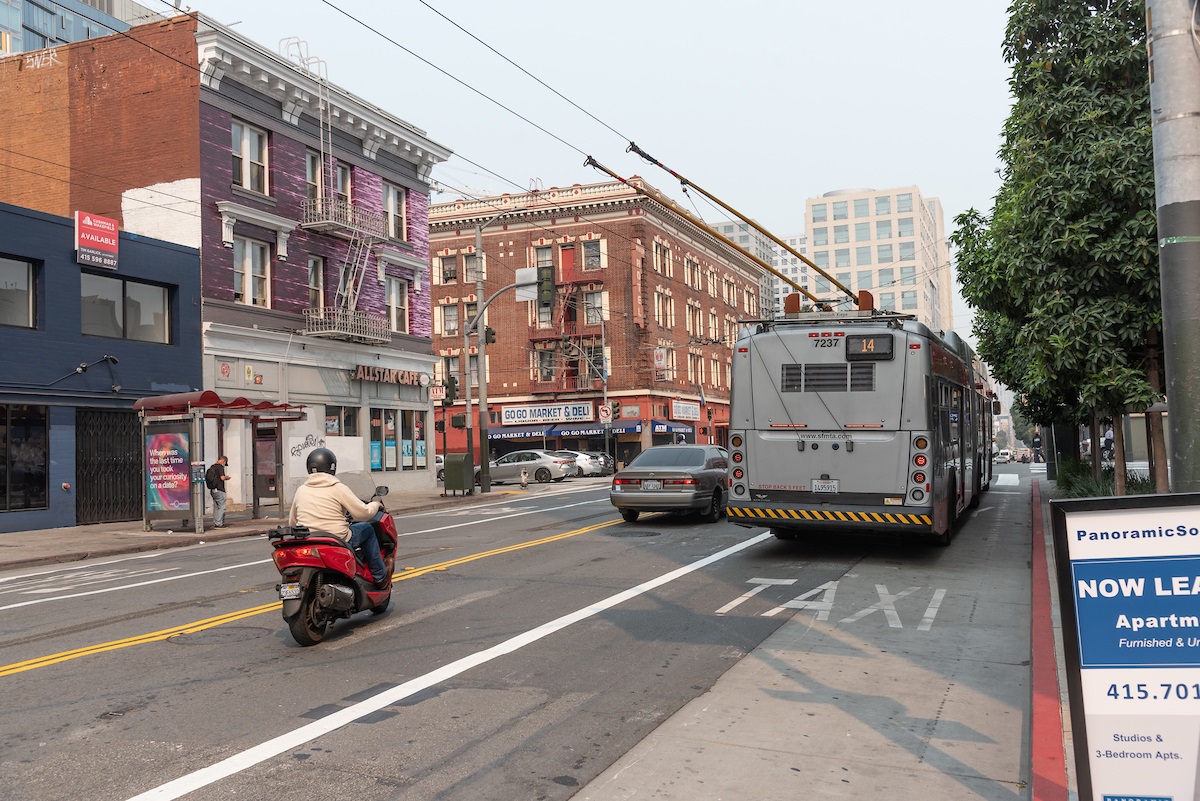
The full-time transit lanes on Mission Street downtown installed as a temporary emergency measure during the pandemic will be made permanent. The first of the city’s Temporary Emergency Transit Lanes to get permanent authorization, they were unanimously approved by the SFMTA Board of Directors at their June 15, 2021 meeting. This shows how a quick-build project can be installed, evaluated, and refined in a relatively short amount of time.
Thousands of daily riders have already felt the impact of the full-time transit lanes since they were first temporarily installed last summer. Now, riders of the 14 Mission, 14R Mission Rapid, and many SamTrans and Golden Gate Transit customers will continue to benefit from the transit time savings we have seen with the implementation of these lanes. Mission Street in SoMa has been a major transit corridor for years, serving regional commuters, local residents and workers that support the downtown area. With the Bay Area reopening, the diverse group of transit riders that travel this corridor from all over the region will be able to get to their destination faster and more reliably thanks to keeping these full-time transit lanes in place.
So far, the lanes on Mission Street have achieved their goal–keeping transit moving even as traffic threatens to slow it down. Traffic has risen 20% since the summer of 2020, yet transit times are staying relatively consistent, demonstrating that the transit lanes are effective in protecting buses from getting caught in traffic.
In addition to our technical evaluation, we collected feedback from the community on the transit lanes, loading zones and parking. Outreach for this project was extensive, including a range of public engagement tactics from posters on the street to direct phone calls to businesses to collect their feedback. While the majority of public survey respondents supported making the transit lanes permanent, we did hear from businesses with significant concerns about loading zone and parking changes. As a result, many modifications were made after the initial temporary transit lanes were installed to help manage the tradeoffs that affected all folks along the corridor, from business owners to transit riders. The advantage of the quick-build approach is that we are able to make modifications like changes to commercial and passenger loading based on real-time feedback.
What’s next?
The temporary project restriped the roadway between 5th and 11th streets and made transit lanes full-time between 3rd and 11th streets. Modifications to the temporary project, including restriping and making transit lanes full-time between 1st and 3rd streets, and extension of bus zones are anticipated for fall 2021. Additional changes, such as sidewalk widening, are being planned for future phases.
Breaking #FoxNews Alert : MIDEAST CHAOS: US launches airstrikes against Iran-backed militias under cover of darkness
— R Karthickeyan (@RKarthickeyan1) Jun 27, 2021
Breaking #FoxNews Alert : WATCH LIVE: Authorities give new update in Miami condo collapse as death toll rises to 5
— R Karthickeyan (@RKarthickeyan1) Jun 26, 2021
Breaking #FoxNews Alert : WATCH LIVE: Miami officials give update as search for condo collapse survivors enters third day
— R Karthickeyan (@RKarthickeyan1) Jun 26, 2021
Breaking #FoxNews Alert : Fox News Poll: Voters say IRS, Facebook have too much power
— R Karthickeyan (@RKarthickeyan1) Jun 25, 2021
Breaking #FoxNews Alert : Derek Chauvin sentencing: Ex-Minneapolis cop sentenced to 22.5 years in prison in murder of George Floyd
— R Karthickeyan (@RKarthickeyan1) Jun 25, 2021
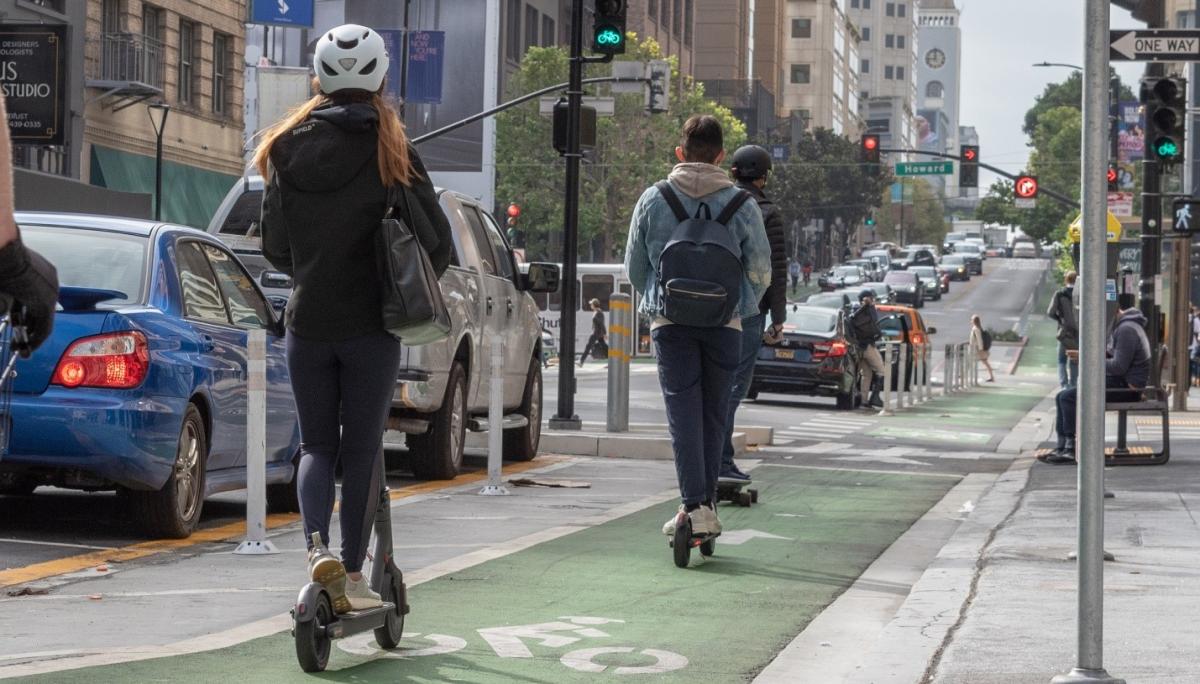
The SFMTA is releasing its next round of Powered Scooter Share permits on July 1.
Scooters remain a sustainable mode of travel and a complement to Muni and public transit service as the city recovers from the pandemic and San Franciscans begin to travel more. The SFMTA’s Powered Scooter Share Program is essential in ensuring that shared scooter operations support the city’s economic recovery in a safe, sustainable, and equitable way.
The SFMTA received four submittals for the permit program and will issue permits to two operators: Spin and Lime. Permits will be in effect for a one-year term, with the option to extend for another year at the discretion of the SFMTA based on compliance with various program metrics.
While the new permit program does not set a limit on the number of scooters each operator may deploy, it does limit the overall citywide fleet size at 10,000. Starting at a base of 2,000 scooters per operator, permittees will be encouraged to apply for permission add scooters in 500 increments every several months. Fleet size increases will be predicated on compliance with SFMTA defined metrics and policy outcomes, including those focused on equity, access, and sustainability.
Allowable Scooter Fleet Size at Permit Launch
Lime 2,000
Spin 2,000
The SFMTA also received an application for the 2021 Powered Scooter Share Permit Program from Scoot. The Agency recently learned of revelations, confirmed by Scoot, that the company has been using unauthorized subcontractors in violation of the terms and conditions of the 2019 permit program. The SFMTA takes these issues very seriously, and will defer a decision on 2021 permit issuance to Scoot to allow time for full investigation and complete its evaluation. Scoot service will pause on July 1st during this time.
New Permit Highlights
The 2021 Powered Scooter Share Permit program builds on the lessons learned from current permit program with the goal of creating a more useful, safe, and equitable program. It establishes new guidance and requirements in these areas:
Accessibility
Adaptive scooters will become a permanent part of the citywide scooter fleet. Additionally, operators will continue their on-demand adaptive programs.
Community Engagement
Permits include new outreach requirements and programs with Community-Based Organizations and local small businesses to expand to a more diverse and equitable ridership.
Labor Harmony
The new permit applications prioritized operators who more frequently hire employees rather than use outside staffing agencies or independent contractors.
Safety
Permittees must implement an escalating penalty structure for unsafe or illegal riding or parking behavior. Furthermore, safety-related scooter charging requirements have been strengthened per feedback from the San Francisco Fire Department.
Equitable Access to Scooters and Distribution Requirements
The program emphasizes service to all neighborhoods in San Francisco. This includes ensuring that everyone in the city is within walking distance of a scooter, particularly in Communities of Concern and outlying areas.
Scooter Parking
The SFMTA will increase the bike rack fee paid by operators from $75 to $100 per scooter to ensure adequate scooter parking throughout the city.
Next Steps – Permitting
The Agency plans to closely monitor permittees’ compliance with the permit terms and conditions once the new permits launch on July 1st. The Agency also looks forward to further stakeholder collaboration as it continues to evolve the Powered Scooter Share Program.
Breaking #FoxNews Alert : WATCH LIVE: Former Minneapolis cop Derek Chauvin to be sentenced in George Floyd's murder
— R Karthickeyan (@RKarthickeyan1) Jun 25, 2021
Breaking #FoxNews Alert : WATCH LIVE: VP Harris holds press conference in El Paso during southern border trip
— R Karthickeyan (@RKarthickeyan1) Jun 25, 2021
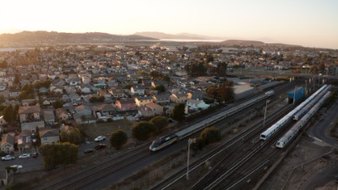
SFMTA and the San Francisco County Transportation Authority (SFCTA) will be co-hosting a virtual public workshop recognizing the need for a new transbay rail crossing between San Francisco and Oakland on Monday, June 28th at 6:30 pm. To watch the live event, please visit the program website.
The workshop is hosted by Link21, a long-range transportation program sponsored by the San Francisco Bay Area Rapid Transit District (BART) and the Capitol Corridor Joint Powers Authority (Capitol Corridor). Link21 is committed to a faster, more connected system, providing safe, efficient, and affordable travel for everyone throughout the Northern California Megaregion that encompasses the San Francisco Bay Area, the Monterey Bay area, the Sacramento area, and the Northern San Joaquin Valley. To participate in a preliminary survey and submit your feedback, please visit the program comment form.
SFMTA Director of Transportation, Jeffrey Tumlin and SFCTA Executive Director, Tilly Chang will introduce the proposal for a new transbay crossing as a solution to the challenges of increased travel demands, overcrowding and congestion on our regional transportation system. Link21 aims to increase connections between affordable housing and high-quality jobs. Additional goals and objectives are to support ongoing SFMTA projects, reduce greenhouse gas emissions, improve air quality and create viable alternatives to driving.
The existing transbay corridor which includes BART, the San Francisco-Oakland Bay Bridge, buses, and ferry service is currently the most congested in the Northern California Megaregion, and one of the most congested corridors in the United States. As such, Link21 proposes a new transbay rail crossing project to provide additional service across the Bay and improve Northern California's livability, economic competitiveness, and environment.
The workshop will feature live, interactive surveys where viewers can provide live feedback on what is most important to their transit wants and needs. Link21 will be providing additional surveys after the event as well as a second workshop this Fall 2021. For more information on Link21, please visit their website.
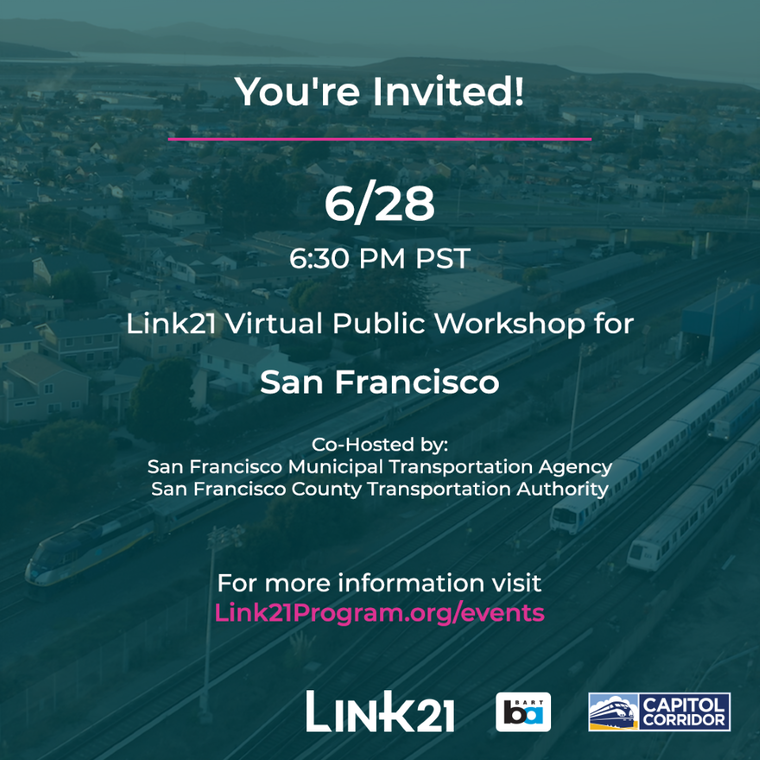
Breaking #FoxNews Alert : VP Harris just arrived at the southern border: What you need to know
— R Karthickeyan (@RKarthickeyan1) Jun 25, 2021
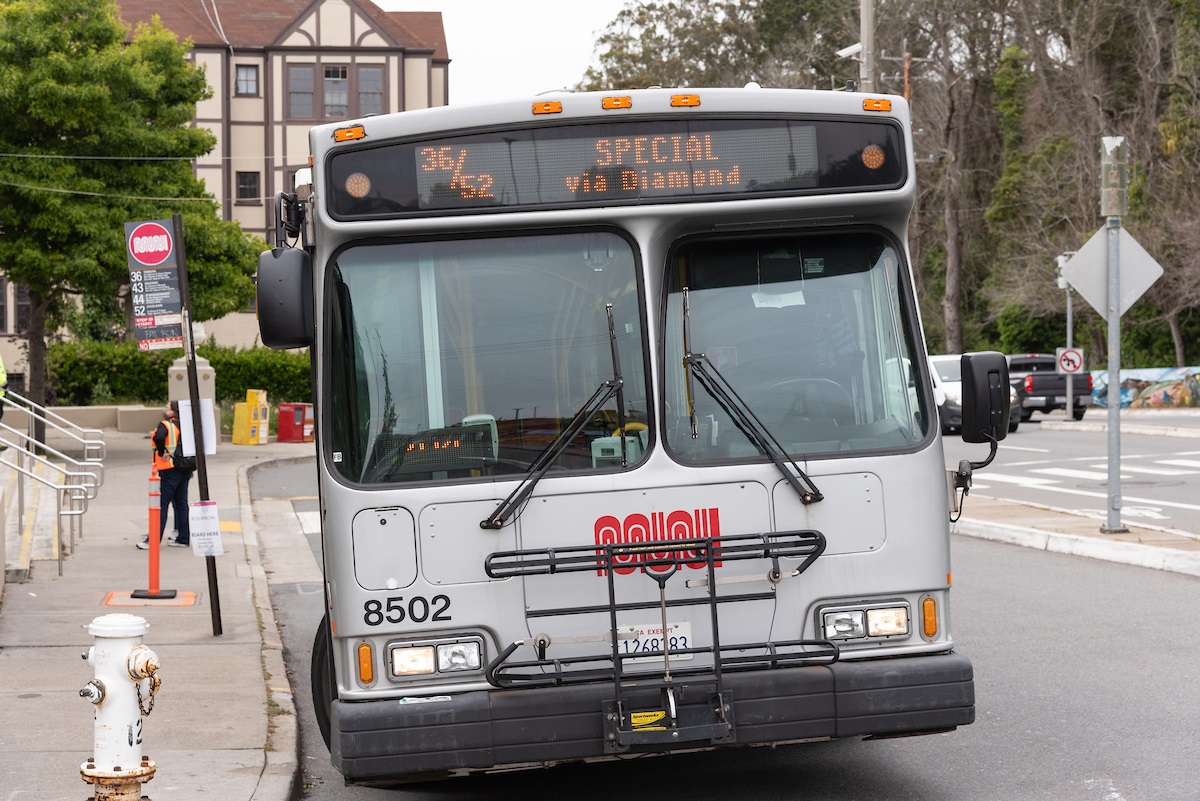
The SFMTA is updating and expanding our next big service change targeted for August 14. These adjustments take into account stakeholder feedback and changes in COVID-19 regulations like physical distancing and our ability to switch operators in the field rather than having to return vehicles to their yards first for cleaning. Enhancements to our previously announced plan include expanding evening service and restoring Muni Owl All-nighter service, adding back four more routes and restoring or adjusting segments on several others.
Expanded Evening Service
As San Francisco reopens, people are traveling later for work, shopping and dining. To help workers and shoppers get around town we plan to expand service hours on 16 key routes. Instead of 5 a.m. to 10 p.m., these routes will operate from 5 a.m. to midnight.
Muni’s full late-night Owl network is scheduled to be restored in August, providing service from midnight to 5 a.m. by adding back the 5 Fulton Owl and 48 Quintara/24th Street Owl. The frequency on the late-night routes will remain approximately 30 minutes. We also plan to extend Metro Bus hours to cover the time span between Owl and rail service.
Muni service hours would be extended in August to midnight on 16 key routes to help people traveling later as the city reopens from the pandemic. For those who need to get around after midnight, we will bring back Muni’s full late-night Owl network, including the 5 Fulton Owl and the 48 Quintara/24th Street Owl, providing service from midnight to 5 a.m. (except for the L Owl, which would continue to run from 10 p.m. to 5 a.m.).
Visit our Muni Owl All-Nighter Service page for the full list of current Owl routes and service information.
New and Adjusted Routes
Based on public input, we will also add the following service:
28 19th Avenue: The full route between Daly City BART and Aquatic Park in the Marina (via Lombard)
57 Parkmerced: The final 57 Parkmerced stop from Stonestown to the intersection of Junipero Serra Boulevard and Ocean Avenue for improved downtown connections via the KT Ingleside-Third Street.
58 Lake Merced: Will travel along John Muir Drive and Sloat Boulevard, serving communities west of the lake and connecting to shopping destinations, Daly City BART and Muni’s 14 Mission.
35 Eureka: Restored with a modification to go northbound on Hoffman and southbound on Douglass, providing Muni access to hilly areas of Noe Valley.
48 Quintara/24th Street: To reduce delays, will reroute service westbound via Castro to Clipper Street while eastbound service would continue to travel on Diamond between Clipper and 24th streets.
Further details can be found on the August 2021 Service Change Updates webpage and on the COVID-19 Muni Core Service Plan
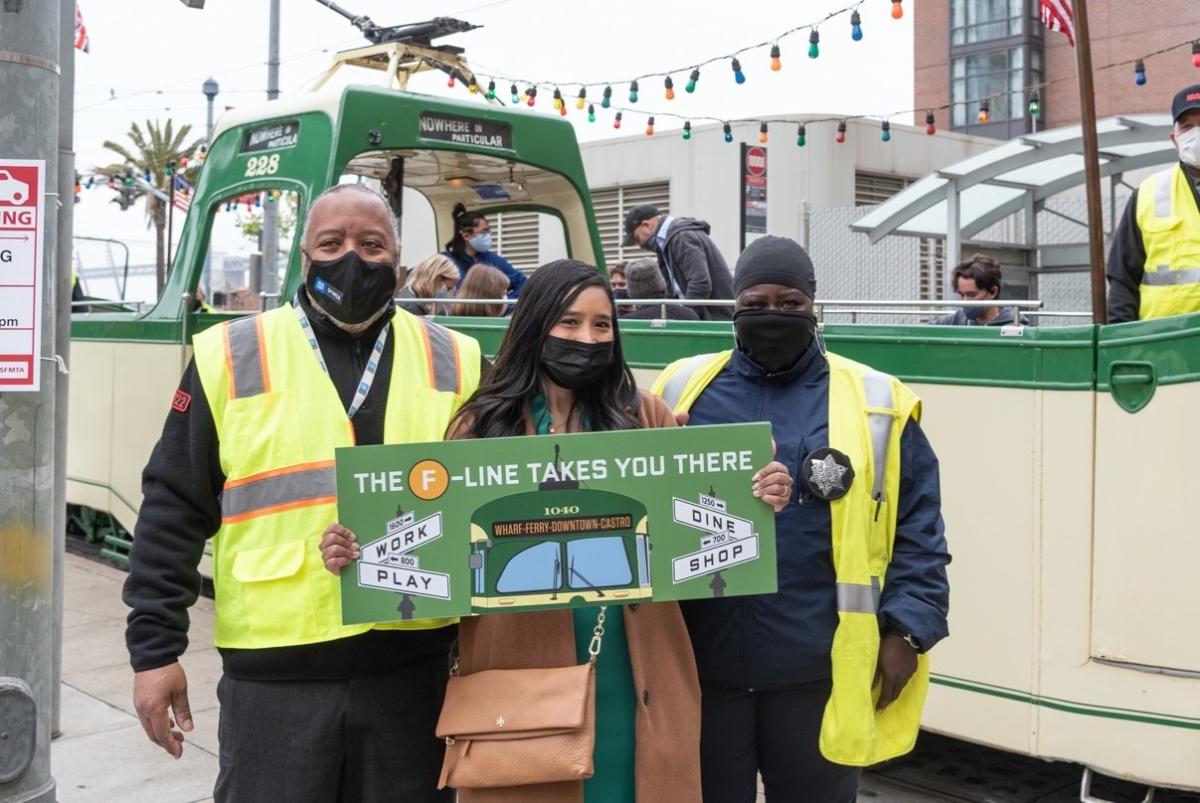
Beginning June 26, the hours of operation for F Market & Wharves historic streetcars will be extended daily to run from 7 a.m. to 10 p.m. in order to support San Francisco’s economic recovery and reopening.
Trips from Castro to Fisherman’s Wharf will run approximately from 7 a.m. to 9 p.m. and return trips from Fisherman’s Wharf will run approximately 8 a.m. to 10 p.m.
This increase in service is based on feedback from streetcar operators and key stakeholders who worked closely with the SFMTA earlier this year to determine initial hours of operation that would support small businesses along Market Street and the Embarcadero.
Last May, the F Wharves-Market was welcomed back by Mayor London Breed, the San Francisco Board of Supervisors and the SFMTA Board of Directors at a small celebration near the Ferry Building. Director Tumlin was in attendance to make the announcement about the return of historical streetcars and other May 15 service changes, including the reopening of Muni Metro stations.
While Better Market Street construction is still under review, the project team has been developing a plan to run the F Market & Wharves full route. A combination of historic streetcar and bus shuttle service would limit impacts once construction begins.
San Francisco lifted most COVID-19 restrictions on June 15 and SFMTA staff will continue to support our economic recovery as businesses reopen, tourists, office workers and regional visitors return. The F Market & Wharves is a popular city attraction and extended service hours will allow Muni customers more opportunities to ride historical streetcars this summer.
Breaking #FoxNews Alert : Search and rescue underway in deadly apartment building collapse near Miami
— R Karthickeyan (@RKarthickeyan1) Jun 24, 2021
Breaking #FoxNews Alert : Emergency crews respond to partial apartment building collapse in South Florida
— R Karthickeyan (@RKarthickeyan1) Jun 24, 2021
Located on the corner of Geary Boulevard and Presidio Avenue is a historically significant yet frequently overlooked public transit facility. Known today as Presidio Division, this massive building was home to Muni's headquarters for nearly 100 years. Here’s a quick look back through time at the history of this 109-year-old property.
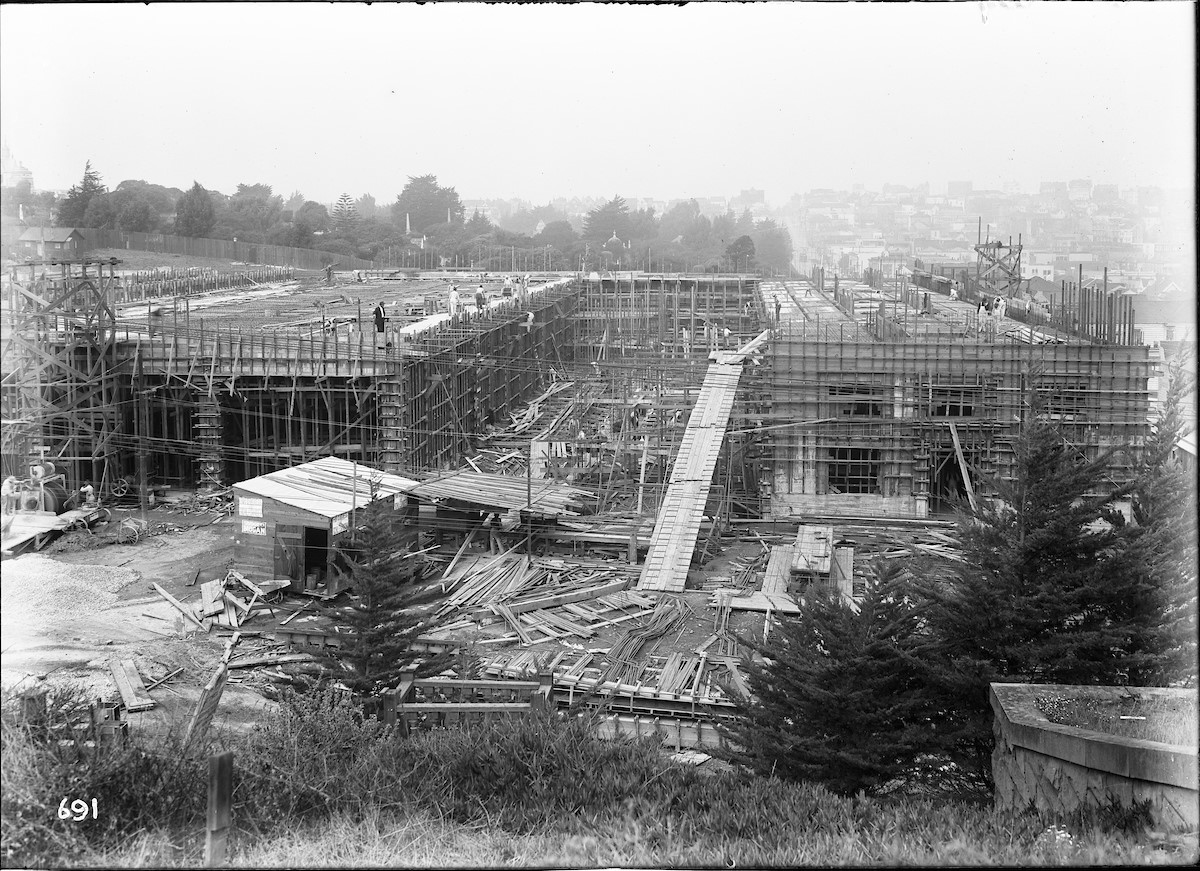
In-progress construction of Muni’s headquarters in October 1912, two months prior to the opening of the city’s publicly owned streetcar line in December. This photo was taken from Calvary Cemetery, the present-day location of a shopping center.
Constructed in 1912 and known then as “Geary Car House”, this building was the operations hub of the San Francisco Municipal Railway, the nation’s first publicly owned transit agency in a major US city. Built on bedrock from reinforced concrete, the original building had a shops and storage garages for streetcar operations, a three-story office tower, and an Art-Deco style relief sculpture above the bronze entrance doors on 949 Presidio Avenue.
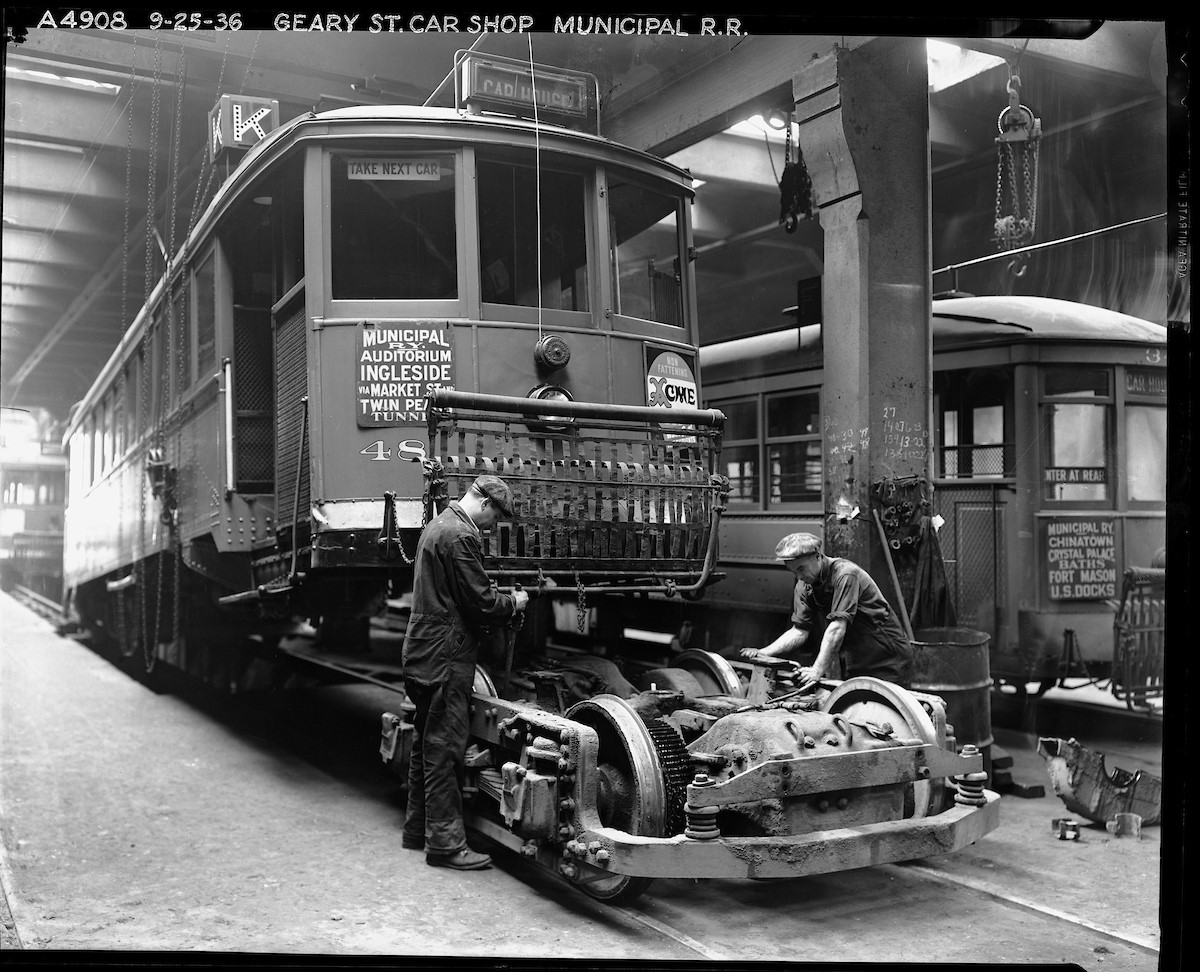
Inside the shops at Geary Car House, two mechanics work on a truck (the combined wheels, suspension, and motor of the streetcar) pulled from a K Line streetcar in this 1936 photo.
In 1915, the rapidly expanding Muni system required more staff and more room, so a second story of offices was added above the streetcar storage and maintenance tracks along Geary. Inside the shops, staff did everything from repairing collision damage to overhauling electric motors and major mechanical parts.
Following World War II, as many rail lines across the city were converted to bus operations, the days of streetcars at Geary came to an end. In the late 1940s, a major project was undertaken to construct a yard and garages on the north end of the building for Muni’s growing fleet of electric trolley buses. After this renovation, the facility became known as Presidio Division.
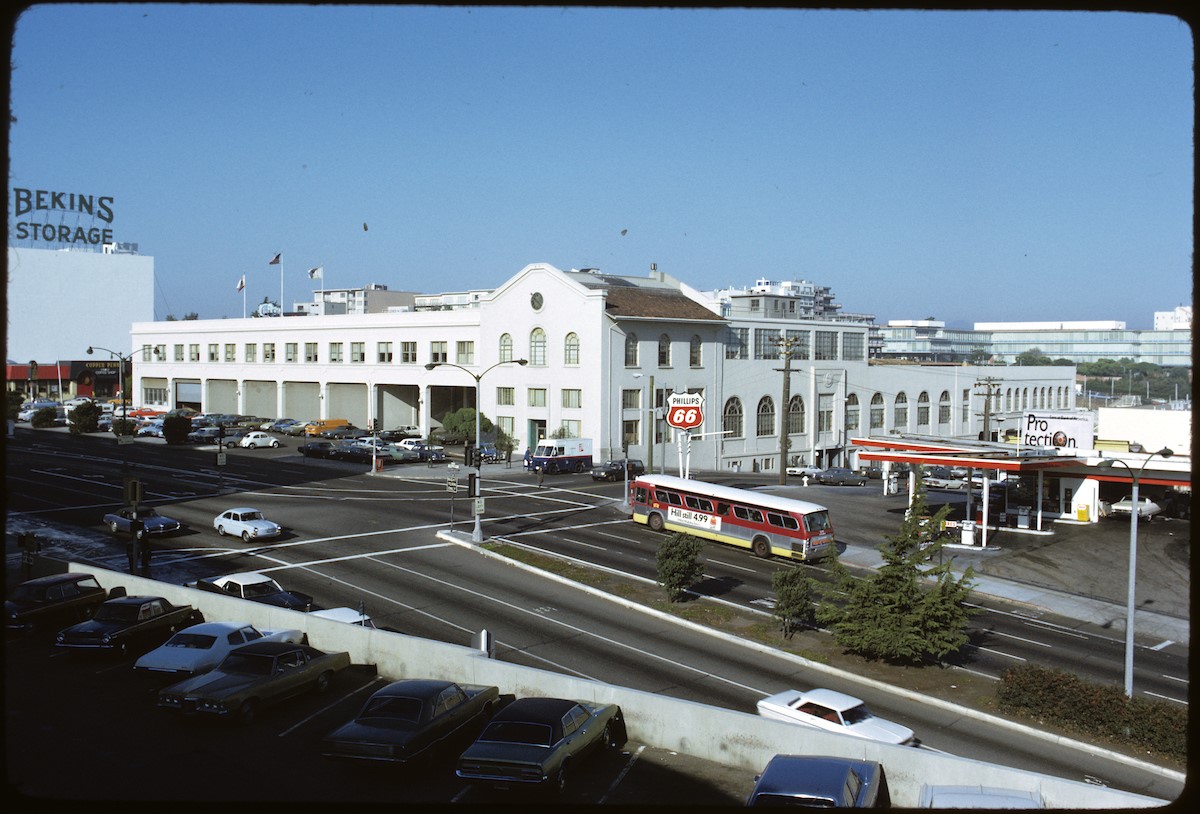
This 1972 view was taken just one year prior to the construction of an underpass for Geary Boulevard that would allow traffic to bypass this area.
In the years following the construction of the bus yard, the building saw various remodels to alter and update interior workspaces to meet the organization’s changing needs. The streetcar maintenance bays along Geary were even used to store the city’s voting machines.
Presidio remained Muni headquarters until the early 2000s, when most offices were moved to the Civic Center area to co-locate many of the functions of the fledgling SFMTA (formed by voter mandate in 1999). Following the move, Presidio has continued to serve as an operations and maintenance division for most of our 40-foot trolley buses as well as the primary offices for operator training and the Peer Assistance program.
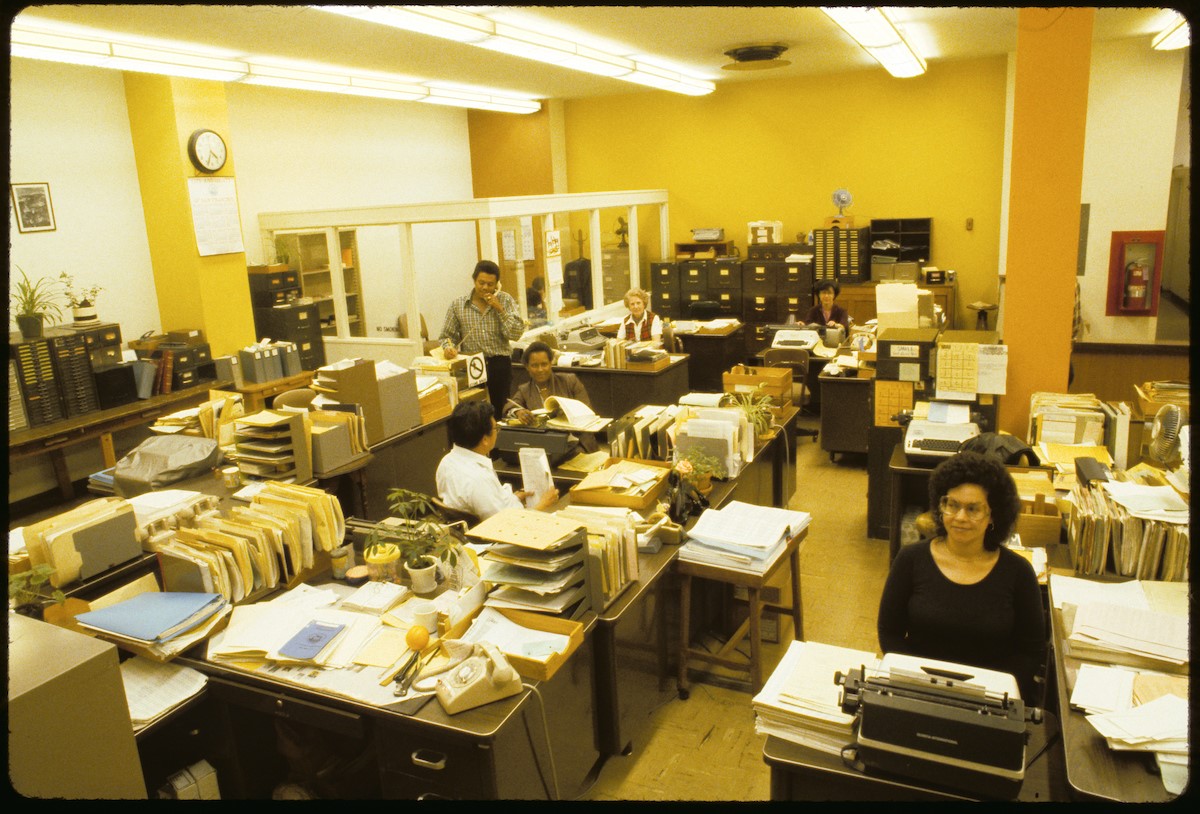
Typewriters, paperwork, and file cabinets abound in this view inside one of the offices at Presidio Division in the late 1970s.
Today, the building shows its age from years of use and is outdated compared to modern transit maintenance facilities, slowing down bus repairs. Though repairs and remodels have been done to keep things operational, the Building Progress Program is seeking to completely revamp Presidio to help support reliable Muni service as part of the SFMTA’s long-term facilities plan.
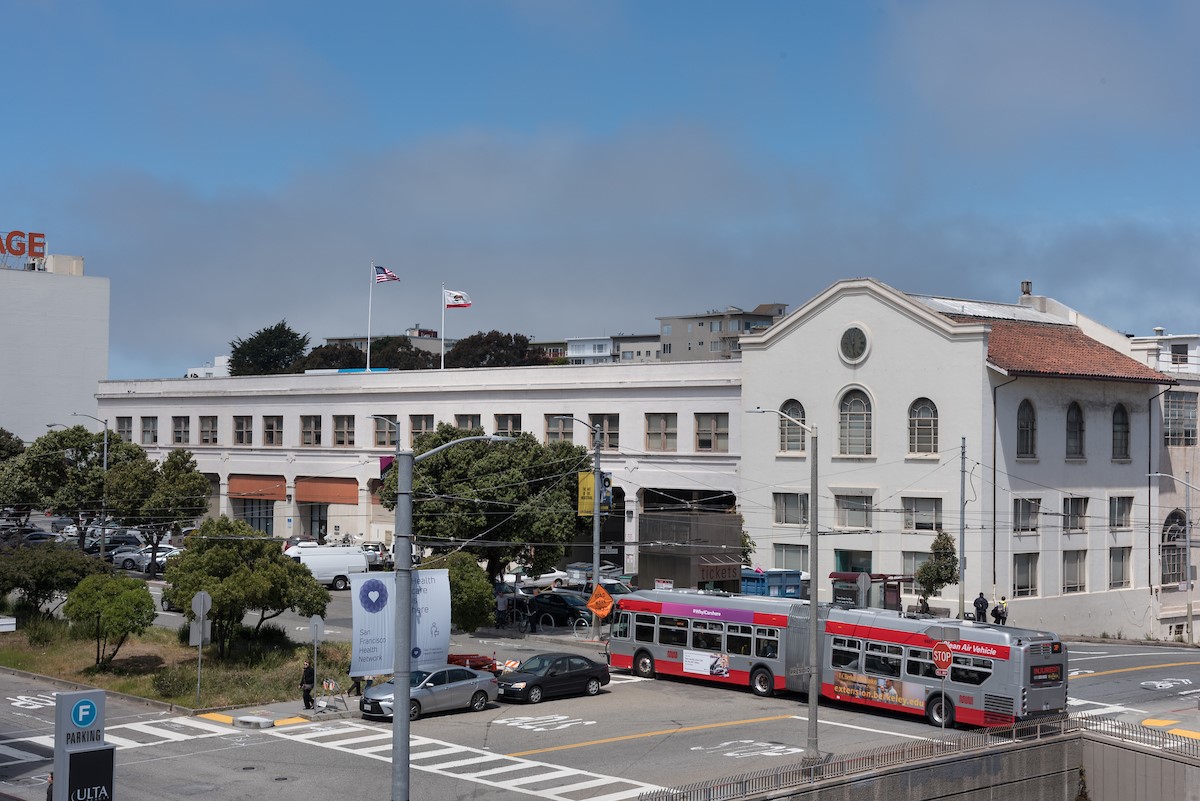
Today, 60-foot buses for the 38 and 38R routes are maintained at Presidio.
Check out more photos of Presidio Division through the years in our Historic Photos collection.
Breaking #FoxNews Alert : FOX NEWS POLL: What sparked the COVID-19 pandemic?
— R Karthickeyan (@RKarthickeyan1) Jun 23, 2021
Breaking #FoxNews Alert : Kamala Harris to make first trip to border more than 90 days since being tapped for crisis role
— R Karthickeyan (@RKarthickeyan1) Jun 23, 2021
Breaking #FoxNews Alert : Data suggests 'likely' link between COVID-19 mRNA vaccines, rare heart issues in teens, CDC panel says
— R Karthickeyan (@RKarthickeyan1) Jun 23, 2021
Breaking #FoxNews Alert : Republicans derail ‘federal takeover’ of elections
— R Karthickeyan (@RKarthickeyan1) Jun 22, 2021
Breaking #FoxNews Alert : Supreme Court sides with student athletes, rules NCAA improperly capped education-related benefits
— R Karthickeyan (@RKarthickeyan1) Jun 21, 2021
Breaking #FoxNews Alert : Jon Rahm wins US Open with unbelievably clutch on final holes
— R Karthickeyan (@RKarthickeyan1) Jun 21, 2021
Breaking #FoxNews Alert : Wreck on rain-soaked Alabama interstate leaves 10 dead, including 9 children
— R Karthickeyan (@RKarthickeyan1) Jun 20, 2021

Have you ever wondered what it takes to modify or add Muni service? Customers often ask if we can bring back or make changes to their routes. Making Muni service changes usually takes many steps over several months. In a typical year, the SFMTA conducts three major service changes: in spring, late summer and winter. Each of these requires months of work and many different SFMTA teams to get implemented.
The COVID-19 pandemic has been anything but typical, and we adapted our service change process to quickly prioritize public health guidance, support essential travel and steadily bringing back routes for communities who depend on transit the most. By August 2021, SFMTA staff will have implemented 12 service changes in 18 months --up to five times faster than usual! With each change, we worked to bring back Muni better. The speed and operational dynamics required to deliver a service change process that typically takes months in a matter of weeks has meant temporarily adjusting how we make service changes. This pace has meant a significantly reduced ability to do pre-implementation public outreach.
We’ve launched a web page that explains the process in detail, before and during COVID. There you can learn about the steps involved in each phase of a typical Muni service change, and how COVID-19 Muni Core Service changes have been different.
Non-COVID Service Change Process
Historically, the process for making service changes consists of the following phases and takes about six months or more:
COVID-19 Muni Core Service Plan Changes
Once the COVID-19 pandemic hit, demands for Muni service and resource constraints changed quickly. The service change process was compressed to speed up the restoration of service, with significant cuts to steps in almost every phase.
Learn more about what changed and how the dedicated SFMTA Transit Planning team have worked to prioritize service restoration.
Looking Ahead
As of January 2021, 100% of neighborhoods identified by SFMTA’s Muni Service Equity Strategy are within two to three blocks of a Muni stop. By August 2021, in time for school to restart, 98% of all San Franciscans will have Muni access within two to three blocks of their home or work.
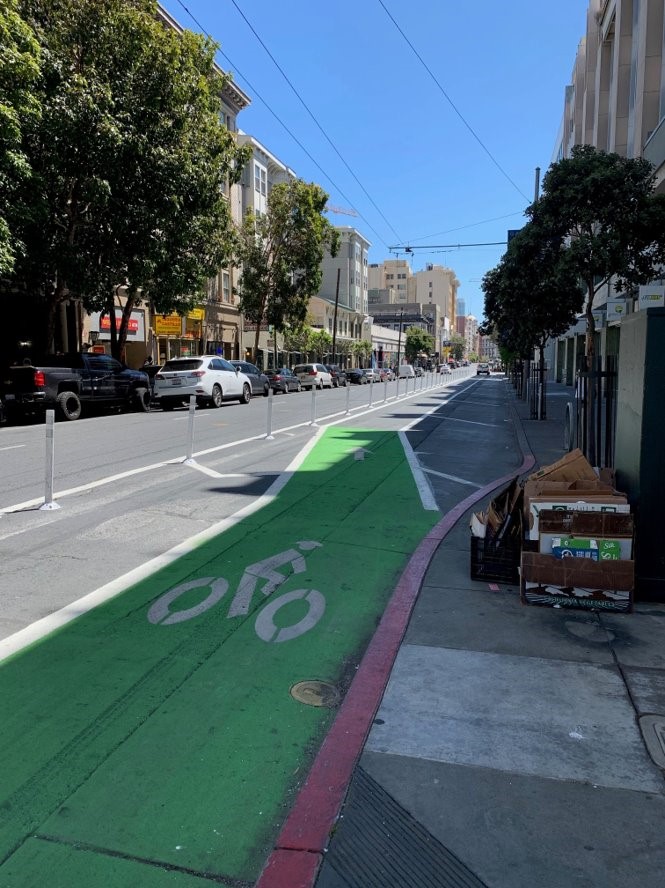
Protected bike lane and active flex space along the 300 block of Golden Gate
Between 2015-2019, the average rate of a person getting hit by a vehicle while walking or biking along the Tenderloin stretch of Golden Gate Avenue and Leavenworth Street was every nine days. The Tenderloin is a densely populated and diverse community located in the heart of San Francisco. It is home to high concentrations of seniors, children, people of color, people experiencing homelessness and people with limited-English proficiency – many of whom live below the poverty line. These groups are most at risk of dying or being severely injured in traffic collisions.
Because of these concerns, the SFMTA launched two quick-build projects on Golden Gate Avenue and Leavenworth Street with preliminary design phases in February 2020. Considering their similar traffic calming goals, physical proximity and shared audience, we pursued a joint outreach campaign for both projects. SFMTA staff began this outreach through door-to-door canvassing, walkalongs, in-person meetings and emails to engage directly with stakeholders and collect project feedback before starting design.
Facing the Pandemic
Unfortunately, public health restrictions associated with the emerging COVID-19 healthy emergency led to a hold on both projects so that staff could allocate resources to address other critical issues that began to arise. To address immediate social distancing and physical space needs in the Tenderloin, the SFMTA worked with community organizations like St. Anthony’s, GLIDE and Tenderloin Community Benefit District (TLCBD) to implement several street improvements such as block closures, physical distancing lanes and temporary vehicle restrictions.
When the projects resumed in fall 2020, COVID-19 health and safety protocols were still in effect and pushed many meetings, typically held in-person, to online formats. We also partnered with the Tenderloin People’s Congress to hold virtual toolkit forums, community workshops and other conversations.
In place of a traditional, one-time, in-person event, staff created a virtual open house with interactive features and information about the projects. Published in seven different languages, the site remained open over a five-week period, allowing greater flexibility for people to view the information and provide feedback. Staff also hosted virtual office hours to provide space for questions and additional comments. Following the virtual open house, both projects held a public hearing in April 2021 and were cleared to start construction in May.
Impact
Every street in the Tenderloin is on the city’s Vision Zero High Injury Network, the 13% of city streets where 75% of severe and fatal collision occur. The COVID-19 pandemic only exacerbated the challenges of addressing the safety needs of the neighborhood. Now, our recently constructed quick-builds on Golden Gate Avenue and Leavenworth Street are helping to address the unsafe vehicle speeds and failures to yield that have made up the majority of traffic incidents in the Tenderloin.
The relationships built from the Safer Taylor project provided a foundation to continue conversations with the community about traffic safety improvements in the neighborhood. Staff began outreach through door-to-door canvassing, walkalongs, in-person meetings and emails to engage directly with stakeholders and collect project feedback before starting design.
Throughout construction, SFMTA staff continued to collaborate with local partners such as Code Tenderloin and TLCBD to provide construction notifications to businesses and residents on the corridors. Both Golden Gate and Leavenworth street changes brought innovative quick-build improvements to the Tenderloin, such as an active flex space, and bringing these projects to life under COVID-19 required creativity, flexibility and strong community support.
What’s Next
Partnering with community organizations allows SFMTA staff to engage with stakeholders that would have otherwise been unreachable due to public safety concerns. While quick-build construction is complete, our work in the Tenderloin will continue. Some next steps include evaluating the quick-builds, exploring potential future projects and transitioning some of our COVID-19 emergency streets to quick-build improvements. Community partnerships with local groups and individual residents will continue to sustain and strengthen our work in the Tenderloin.
Breaking #FoxNews Alert : Supreme Court sides with Catholic foster agency that excludes same-sex couples in closely watched religious liberty case
— R Karthickeyan (@RKarthickeyan1) Jun 17, 2021
Breaking #FoxNews Alert : Supreme Court upholds Obamacare law, dismissing challenge from some red states
— R Karthickeyan (@RKarthickeyan1) Jun 17, 2021
Breaking #FoxNews Alert : Offices of Hong Kong’s pro-democracy newspaper raided, executives arrested
— R Karthickeyan (@RKarthickeyan1) Jun 17, 2021
Breaking #FoxNews Alert : Texas Gov. Greg Abbott announces whopping 'down payment' for border wall
— R Karthickeyan (@RKarthickeyan1) Jun 16, 2021
The verdict is in: transit lanes on Geary Boulevard are keeping riders moving apace, despite citywide trends of increasing traffic.
Muni has remained critical for San Franciscans making essential trips throughout the pandemic. The Temporary Emergency Transit Lanes program quickly installed temporary transit lanes on key routes across San Francisco to help preserve the travel time gains we saw during the early days of the pandemic. Since emergency transit lanes were installed in the Richmond neighborhood last winter, we have been able to lock in 50-75% of those travel time savings for 38 Geary customers where transit lanes were added.
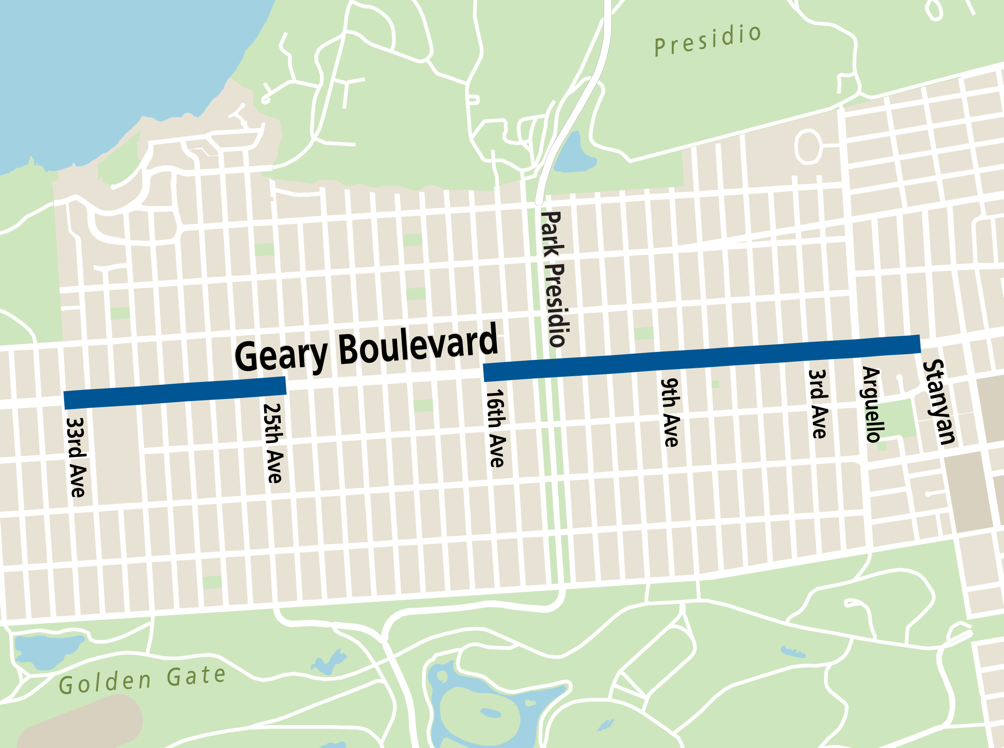
Emergency transit lanes and other transit improvements were installed along segments of Geary Boulevard between 33rd Avenue and Stanyan Street.
Geary is one of the busiest bus corridors in North America. The new transit lanes are building on the success of the Geary Rapid Project, which is making much-needed transit and safety improvements between Market and Stanyan streets and is now close to wrapping up construction --on time and on budget. Combined with the emergency transit lanes in the Richmond, 75% of the Geary corridor now has transit lanes.
The Geary corridor also features new wooden sidewalk extensions at some of the 38R Geary Rapid’s busiest bus stops. These temporary extensions allow buses to stay in the transit lane when picking up and dropping off passengers, making them more accessible and reliable.
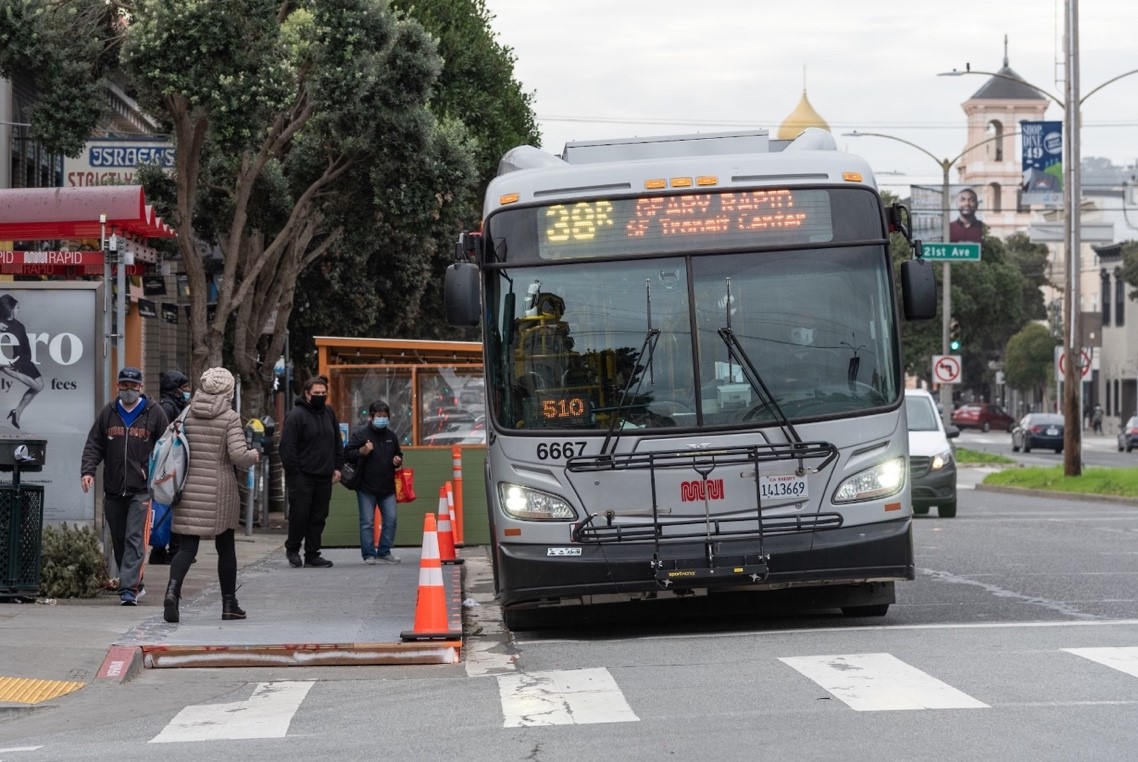
Passengers board a 38R Geary Rapid in the Richmond District with the help of a temporary wooden "bus bulb."
After the temporary emergency transit lanes were installed, they were evaluated using several criteria, including recommendations we heard from the community to ensure that the improvements aren’t creating unintended problems. Metrics we looked at included bus travel times, bus crowding and effects on vehicle traffic.
Some of the key takeaways are:
Considering the positive evaluation findings and support for maintaining the transit lanes, we are proposing to make them permanent. The legislation for doing so will be presented to the SFMTA Board of Directors, likely in July 2021.
Learn more about the evaluation results and next steps on the project webpage.
Project staff will also host a “Virtual Office Hours” session on Wednesday, June 30 between 4 p.m. to 6 p.m. to answer questions about the evaluation results and next steps.
The Geary Boulevard Improvement Project (Phase 2 of Geary BRT) had previously envisioned transit lanes in the center of the street between Arguello Boulevard and 28th Avenue. In light of the emergency transit lane evaluation results and other factors, the SFMTA is now pursuing a revised side-running design, which could include additional transit lanes, bus stop modifications and safety improvements. Outreach to seek input on these changes is planned for later this year.
Breaking #FoxNews Alert : WATCH LIVE: Putin, Biden hold separate press conferences after high-stakes Geneva meeting
— R Karthickeyan (@RKarthickeyan1) Jun 16, 2021
Breaking #FoxNews Alert : Biden arrives for long-awaited Putin meeting in Geneva where US officials say 'nothing is off the table'
— R Karthickeyan (@RKarthickeyan1) Jun 16, 2021
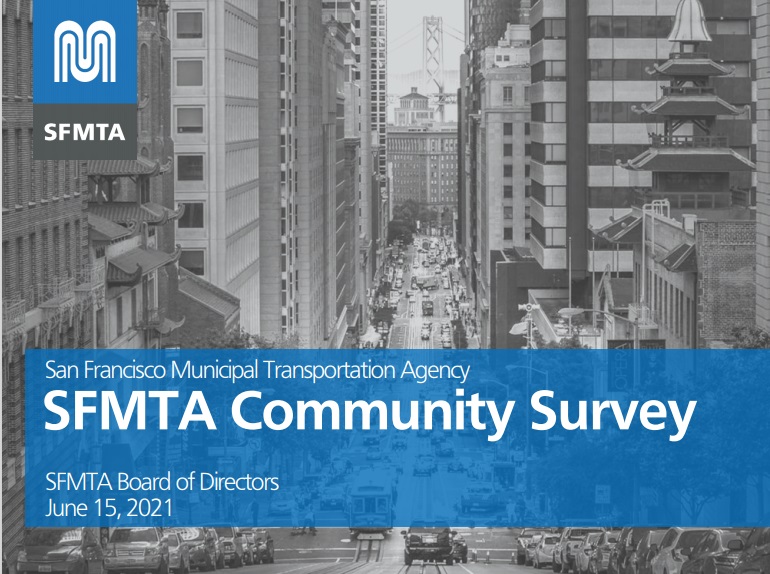
Since the beginning of the pandemic, the SFMTA has been looking for ways to strengthen our system and improve our efficiency. We are using this opportunity to come back as a better version of ourselves. A big part of making transportation improvements is to hear from the public about what works and what we can do better. Earlier this spring we completed a community survey of over a thousand San Franciscans asking for your thoughts about public transportation in San Francisco and here is what you had to say:
Muni is Essential for Social Equity
Muni service is essential to making San Francisco a socially equitable and just city. Seven of ten people surveyed describe Muni as an affordable transportation option, and more than two-thirds also support expanding our existing reduced fare programs for youth, seniors, and low-income residents. Seniors, people with disabilities, people of color and low-income San Franciscans have the fewest transportation options and rely on Muni. We are committed to removing any and all barriers to access, including income.
Overall, having more frequent and reliable service was a higher priority (68%) than lowering fares for everyone (28%). At the same time, for those households with incomes under $35,000, lowering fares was the higher priority. We want to ensure that the cost of a Muni fare isn’t a barrier to transportation, and the SFMTA is working to identify funding to expand free and discounted fares without sacrificing Muni service. As San Franciscans recover from the COVID-19 pandemic, Muni service is essential to ensuring everyone in the city can access jobs, health care, schools and groceries, regardless of their income or neighborhood.
Need for More Transportation Funding
Over the last twenty years the demands on San Francisco’s transportation system have increased while revenues haven’t kept up, and the pandemic has only made these problems worse. Recent federal aid helped prevent steep cuts to Muni service but these one-time funds were only a stop-gap measure.
We are encouraged that San Franciscans have heard our message about the agency’s need to rethink funding for the future. Approximately three-quarters of survey respondents see a need for additional funds to improve Muni and back the concept of potential funding proposals to provide it. Seven out of ten people are concerned about a lack of funding leading to service reductions.
Improving on Environmental Goals
Public transit is one of the most important tools we have in the fight against climate change. Eight of ten people describe Muni as good for the environment. By investing in electric buses, improving the reliability and speed of Muni service and making the city a safer place to walk and bike, we are making transit more environmentally sustainable. We already have one of the greenest fleets in the world, but we are committed to transitioning to an all-electric fleet in the years to come.
Muni Service and Facility Upgrades
One interesting note, a majority of people surveyed rate Muni service as “good.” More frequent Muni riders were even more positive about Muni’s service (75% rated it excellent/good). However, improving the speed, frequency and reliability of buses and trains is a top priority for San Franciscans. Key improvements residents want prioritized include:
Next Steps
We are continuing to gather feedback from the public and from SFMTA staff to ensure our transportation projects and programs reflect our community’s priorities and values. Your feedback will be the focus of our planning and guide us in making tough choices with limited resources. We will be using survey research to better understand the pandemic’s impact on transportation in the community. In the coming months, we will be fielding our bi-annual travel decision and Muni Rider surveys, as well soliciting more feedback about community transportation priorities. We want to thank you for your input and are working hard to bring you the service that you deserve. For more information, read the detailed report of our survey results.
Breaking #FoxNews Alert : Israel launches new airstrikes on Hamas targets after terrorists launch 'incendiary balloons,' IDF announces
— R Karthickeyan (@RKarthickeyan1) Jun 15, 2021
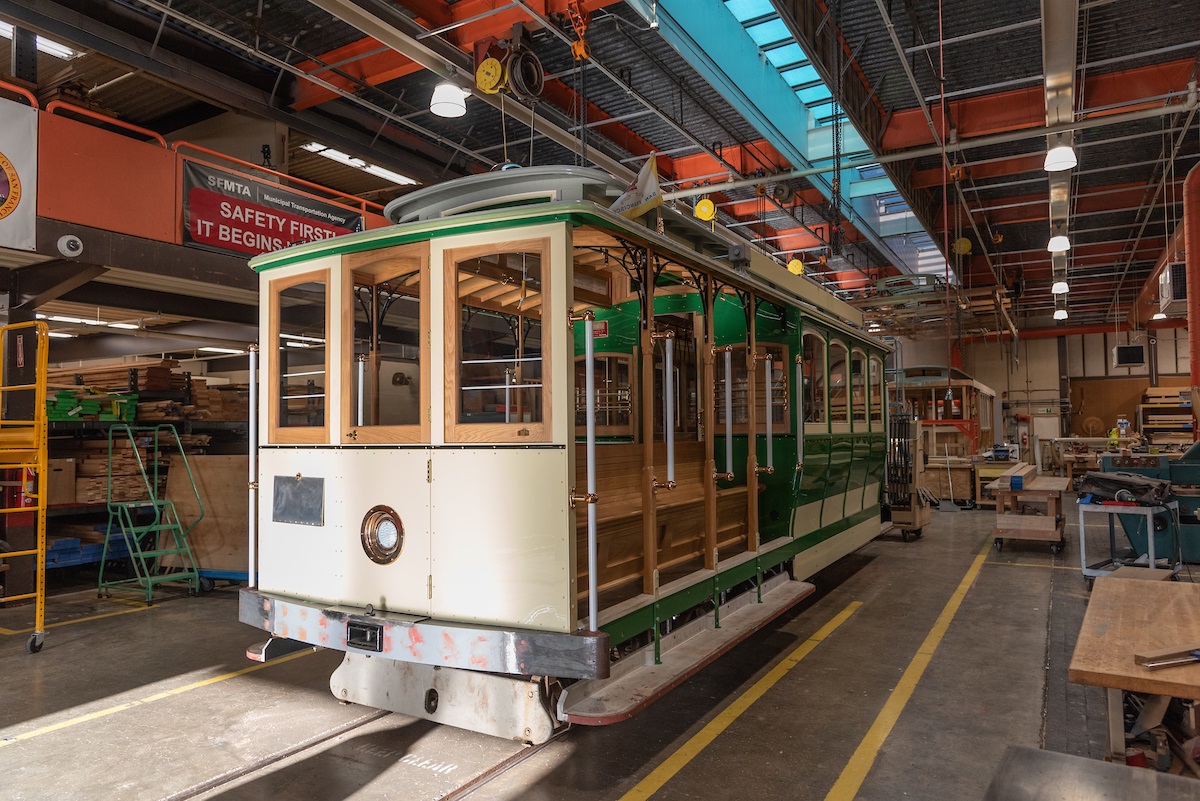
Restored Cable Car 8 being readied for return to service
Nothing says “San Francisco” quite like our historic cable cars--and they’ll soon be gracing our streets once more. As the city intensifies its focus to supporting economic recovery, residents, regional visitors and tourists will see the return of the iconic cable cars and hear their chiming bells from Union Square to Fisherman’s Wharf. Today, the SFMTA, along with Mayor London N. Breed, announced that cable cars will be gliding down the city’s picturesque hilltops this summer as downtown economic activity returns.
SFMTA staff will conduct mechanical inspections of the historic vehicles and operator retraining in mid-July. By the first week of August, we will test the system by inviting passengers aboard for the duration of a “mock service" trial, riding the lines where cable cars are operating and making stops. This mock service will be irregular, not following a particular schedule, as we work out any kinks in the system that might arise.
By early September, cable car service will return - first to the Powell-Hyde line from about 7:30 a.m. until about 10 p.m. (though cars returning to the cable car barn after 10 p.m. will continue to take ride to Chinatown). Service on the Powell-Mason and California routes will then follow.
Last March, in response to the COVID-19 pandemic, the SFMTA temporarily halted cable car service as part of the city’s emergency response. This decision was made to best protect operators and the public. Muni resources were then shifted to a core network --a limited number of the most in-demand routes--to serve essential workers and accommodate physical distancing on San Francisco’s most utilized lines. The result was the longest cable car shutdown since the full system reconstruction in the 1980s. Now, to reboot the system requires significant work. Leading up to the return of San Francisco's cable cars, the SFMTA will recertify operators, hire line inspectors and prepare our infrastructure to accommodate service.
Stay tuned for more details in the coming months!
Anyone interested in cable car service updates is encouraged to subscribe to text or e-mail updates for more information.
Breaking #FoxNews Alert : Southwest system outage leaves passengers stranded nationwide for a second day in a row
— R Karthickeyan (@RKarthickeyan1) Jun 15, 2021
Breaking #FoxNews Alert : US death toll from COVID-19 tops 600,000 as weekly fatalities decline to new lows
— R Karthickeyan (@RKarthickeyan1) Jun 15, 2021
Breaking #FoxNews Alert : EXCLUSIVE: Former CDC Director Redfield explains why he believes COVID-19 emerged from lab, WHO 'compromised'
— R Karthickeyan (@RKarthickeyan1) Jun 15, 2021
Breaking #FoxNews Alert : Southwest Airlines implements ground stop after third-party tech issues
— R Karthickeyan (@RKarthickeyan1) Jun 15, 2021
Breaking #FoxNews Alert : Biden calls Putin 'worthy adversary,' lobs warning on Russian aggression
— R Karthickeyan (@RKarthickeyan1) Jun 14, 2021
Breaking #FoxNews Alert : Biden to take questions in rare news conference at NATO summit ahead of Wednesday's Putin meeting
— R Karthickeyan (@RKarthickeyan1) Jun 14, 2021
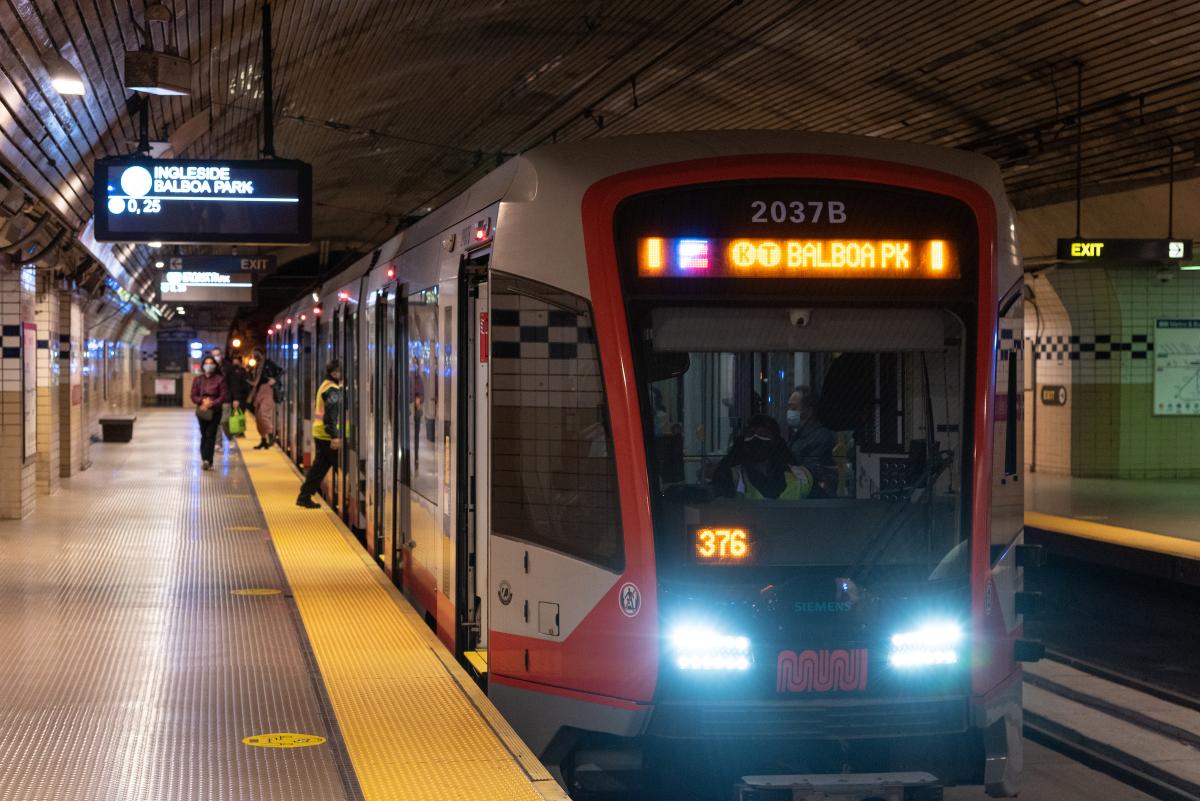
In case the folks announcing “Welcome back Muni riders!” and “Thanks for riding Muni!” when you ride our buses or trains sound familiar, you’re not mistaken. Those are INDEED celebrity voices!
Since the SFMTA’s Muni Service Restoration on May 15th, riders have been entertained with welcome back greetings and thank you announcements from local legends in our Metro subway stations and on various rail and bus routes all around the city.
Celebrities providing voiceovers as a fun way to welcome back riders include San Francisco Mayor London Breed, celebrity chef Martin Yan, Forty Niners legend and wide receiver Jerry Rice, award winning actor and SF native BD Wong , voice of the San Francisco Giants Renel Brooks-Moon, play-by-play announcer of the San Francisco Giants Dave Flemming, and San Francisco’s queer and trans non-profit community service and performance order, The Sisters of Perpetual Indulgence. With many more to come!
By the way, did we miss anyone? Which local San Franciscan or celebrity would you like to hear?
To our riders: we thank and appreciate you for choosing Muni after such a tough year. We hope this campaign brings some joy to your trip. The SFMTA is dedicated to helping you reach your destination anywhere in San Francisco as the city reopens.
Looking ahead to August, pending pandemic protocols, more than a dozen bus routes that were temporarily suspended due to pandemic-related service reductions will be restored. With this effort we plan to bring 98% of San Francisco within two to three blocks of a Muni stop.
The SFMTA would like to thank our celebrities for lending their voices as we connect San Francisco through a safe, equitable, and sustainable transportation system. We look forward to seeing you onboard! As Mayor London Breed says, “We're so happy to have you back on Muni!”
Breaking #FoxNews Alert : WATCH LIVE: Biden holds press conference after G-7 nations issue statement warning Russia, China
— R Karthickeyan (@RKarthickeyan1) Jun 13, 2021
Show HN: Git for LLMs – a context management interface Hi HN, we’re Jamie and Matti, co-founders of Twigg. During our master’s we continuall...